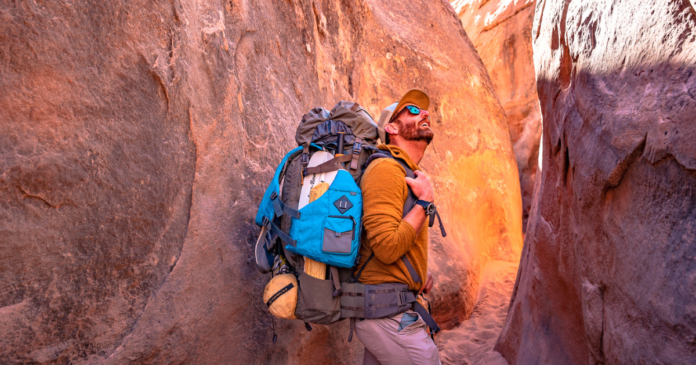There are several pieces of hiking gear that I rely on for every backpacking trip. Many of these are underrated and often completely overlooked by my peers. But given how useful and inexpensive they are, I think everyone should take another look at these 8 items. Let's get into it!
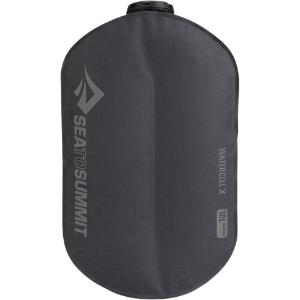
1. A Dromedary or Water Bags
This simple means of hauling water is well worth the modest investment. Most recently, I've been using the Sea to Summit Watercell X. For starters, I like how rugged it is. I can toss it around and never have to worry about it puncturing. Plus, there is a fine-tuned cap at the top, which makes it easy to pour small amounts into a cup or cookpot. Sometimes things like a Camelbak or Nalgene can splash out unwanted doses, thereby wasting your supply.
I also love that there is an extra nozzle that can attach to make a basic, slow-release showerhead. That's a rarity in the backcountry for hiking gear. In terms of space savings, the nice thing about a water bag is that when it's not full, it can collapse down. No matter how empty a water bottle or hard carry case might be, it will always take up the same volume in your pack.
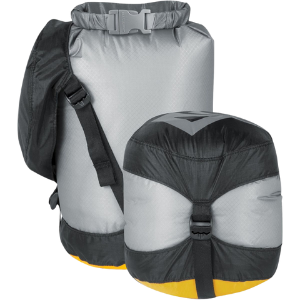
2. Compression Sacks
Anytime you can buy yourself some extra space in your pack, you're going to be a happier camper. Things like sleeping bags and clothes have a decent amount of poof to them. It's amazing how much more condensed you can make these things with a compression sack. I know certain purchases come with stuff sacks, but a compression sack has extra straps on the side that take packing hiking gear to the next level.
An additional advantage is that fancier compression sacks often have a good amount of water repellency, and are even sometimes waterproof.
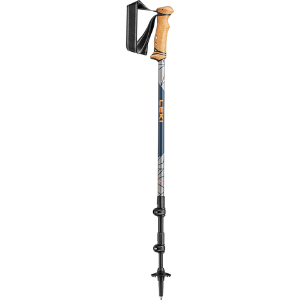
3. Trekking Poles
If you've been following my channel then you've seen my flip-flop on trekking poles recently. Now, a lot of people think these are lame. I should know, since I used to be one of them. However, I've come to appreciate their utility and I understand why many thru-hikers swear by them. Trekking poles can significantly reduce the impact on your body, especially if you're doing a trail with a lot of elevation gain/loss.
They not only bring your arms into the mix while grunting uphill, but they add excellent stability/security while trying to navigate those steep downhills on legs that are still recovering from the climb. They also come in handy for river crossings, or any other unstable sections, since they again add those extra points of contact into the mix.
How do I choose a trekking pole?
I look for poles that have a latch-lock, rather than the ones that twist into place. I've found that over time the latter style tends to fail more easily. If you're using your poles to their full extent, then you will likely be adjusting them on the fly reasonably often. It's therefore better to go with something that can handle the repeated stress. I also like the poles that can detach into three parts.
Poles are great when the terrain calls for it, but it's also nice to be able to stash them away for periods of time. The ones that can condense down are much easier to manage on the outside of your pack. Finally, if your budget allows for it, there are some fancy carbon fiber poles that really shed those extra ounces. But that's just a bonus; anything with the first two features will have you well on your way to easier and healthier hiking.
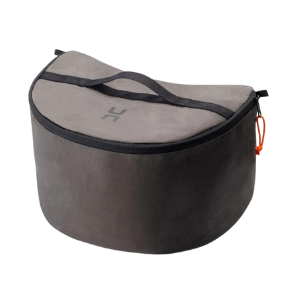
4. Pack Organizers
Since I'm often documenting my adventures, I've found the waterproof Hillsound PackStack Pro to be an excellent replacement for my usual, clunky camera case. It packs down much better, I don't have to worry about my camera getting soaked, and if I toss a jacket in there, that adds sufficient padding to keep everything protected when rolling about in my backpack with other hiking gear.
Non-videographers will get just as much utility out of one of these. The strategically designed shape of my PackStack Pro contours perfectly to the inside of my trekking bag, which helps reduce wasted space that comes from haphazard packing. I'm as guilty as anyone of stuffing things in without rhyme or reason. As the name suggests, these inexpensive accessories help keep everything organized. I have seen the light and I'll never again go back to my sloppy packing ways.
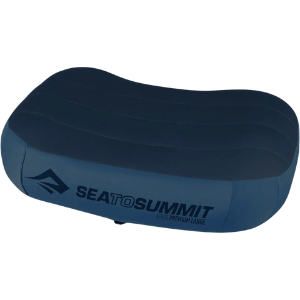
5. Camping Pillows
A camping pillow makes a huge difference in my sleep quality and it barely adds any weight or volume to my pack, especially the inflatable kind, which is what I've gravitated to lately. Gone are the days of balling up some dirty shirts to get me through the night. An actual pillow is so much more comfortable.
I've found that any piece of hiking gear that improves your sleep in the backcountry is the way to go. Waking up rested produces a much better hike the following day, not just for your body, but your overall mood as well.
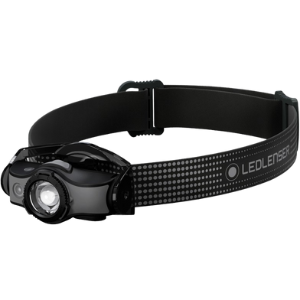
6. High Quality Headlamps
I can't tell you how many people I see around campsites with headlamps that barely illuminate their shoes, let alone anything worth seeing in front of them. You might be on a streak of turning in early and not needing to leave the tent at night, but if you ever get in a situation where you do need to navigate in the dark, that dinky light isn't going to cut it. Personally, I like having a high-quality torch that can focus the light into a tight beam for seeing across larger distances.
Likewise, being able to set a wide spectrum is super helpful for just illuminating the campsite. I often reserve the headlamp's (lately I've been all about Ledlenser) full luminosity only for necessary occasions. If I'm just casually going about my business, then I find the battery-saving medium settings work plenty well. And if I'm just chilling in my tent, say reading a book before bed, then I particularly like the red-light setting, which maintains your night vision in case you feel like doing some stargazing before bed, or if you just don't want to blast your corneas before dozing off.
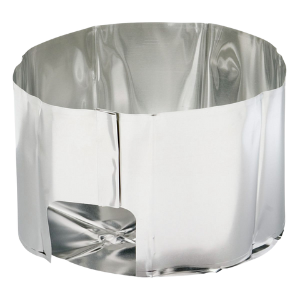
7. Wind Screens
These lightweight, flexible, simple sheets of aluminum wrap around any stove and greatly increase its efficiency by blocking out the wind. This will conserve fuel and reduce cooking time (which will also combat the dreaded campsite hanger). Building a little makeshift chimney is particularly important for stoves that don't have their own built-in protection (e.g. a PocketRocket vs a JetBoil.
I promise you, invest in this cheap little gizmo and you will thank me for recommending this piece of hiking gear (perhaps down in the comment section would be nice, wink wink).

8. Hiking Socks
You better believe it. A good pair of hiking socks, or multiple pairs, ideally, will become your best friends in the backcountry. I can't tell you how many people I see hitting the trails in whatever socks they normally wear. The problem with basic cotton socks, or cute little gym socks, is that they likely lack any or all of the necessary characteristics, such as: moisture wicking, padding, ample ankle coverage (to clear your boots), warmth, etc.
This can increase the likelihood of blisters and decrease your likelihood of fun. There are some slick synthetic blends out there, but personally, I like a good old-fashioned pair of wool socks. They're much less itchy these days and many styles are geared towards performance for hiking and even trail running. I also like to have one pair designated for day-use, and one clean(ish) pair reserved for the night. It really makes a difference for comfort while hiking and coziness while sleeping.
So that's my list of simple but overlooked backpacking goodies. If you haven't already, try giving some of these a shot. I think they'll take your game to the next level. I'd also love to hear from you. Is there anything I missed that is relatively cheap and not immediately obvious? Let us in on your secret down below.
Otherwise, I hope you enjoyed this article. For more tips, gear reviews, and general awesome adventuring, subscribe to our newsletter.
Disclaimer: This article contains affiliate links in which Eric Hanson makes a small commission at no additional cost to you, but it is a great way to show your support. Thanks!



